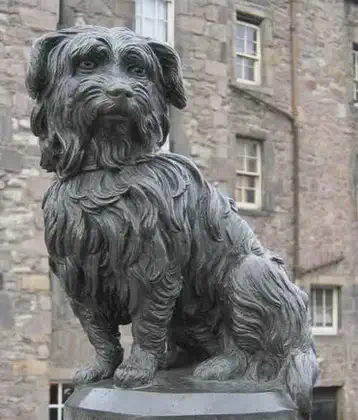
On November 15, 1824, a devastating fire occurred in the Old Town of Edinburgh and is considered one of the most destructive fires in the city’s history.
The fire broke out around 10pm on 15 November 1824, in James Kirkwood’s engraving workshop on the second floor of the Old Assembly Close, a narrow alleyway just off the High Street on Parliament Close. Strong winds caused the fire to spread rapidly, and a significant portion of the Old Town, including the Parliament House and the Royal Exchange, was destroyed.
The city of Edinburgh had formed a permanent fire brigade only two months earlier under its new firemaster James Braidwood. Although this new force arrived quickly with their custom-built fire engines, they had difficulty locating a water supply and did not begin to tackle the blaze until 11pm, by which time six stories of the building were ablaze.
Due to the narrowness of the alleyway, the fire spread quickly to adjoining buildings, first affecting those to the east of Fishmarket Close and later spreading along the roofs of the High Street through embers carried by a southwesterly breeze. By midnight, four tenements were ablaze as the fire advanced towards the Cowgate. The Old Assembly Hall at the centre of the fire (which had given its name to the close) was destroyed during the night. Around midday on Tuesday, 16 November, the spire on the Tron Kirk caught fire and molten lead began to pour from its roof. Although firemen succeeded in reaching the roof of the church, the fierceness of the blaze forced them back.
At 10pm on Tuesday evening a secondary outbreak occurred in buildings on the corner of High Street and Parliament Close (renamed Parliament Square after the subsequent rebuilding of the affected area). This blaze started on the top floor of an eleven-story building overlooking the Cowgate. This led to claims of divine intervention and punishment from God, as well as deliberate fire-raising.
Total damage
- High Street (Royal Mile): four six-storey tenements fully lost plus upper storeys of buildings closer to the Tron Kirk damaged
- Conn’s Close: two timber-framed ’lands’ (tenements) of great antiquity destroyed completely
- Old Assembly Close: four seven-storey tenements lost and the Assembly Hall (a ballroom)
- Borthwick’s Close: six tenements lost
- Old Fishmarket Close: four six-storey tenements lost and Neill & Co printworks
- Parliament Close: four double tenements of seven to eleven storeys destroyed, including the birthplace of James Boswell
- Office of the Edinburgh Courant newspaper destroyed
- John Kay’s shop in Parliament Close destroyed
- Old Assembly Hall destroyed.
- Several printworks destroyed
- Notable residents who lost their home in the fire included Hector Gavin and Archibald Inglis
An estimated 400 homes were destroyed, with 400-500 families left homeless. Thirteen people died including those of two firemen and many people were injured. Historic homes destroyed included that of Robert Dundas of Arniston, the Elder and George Heriot.
The reconstruction efforts that followed led to the creation of the New Town of Edinburgh.
More From This Day

Muirhead & Sons Pipe Band officially disbands on their 50th anniversary, 1978
November 15, 1978



